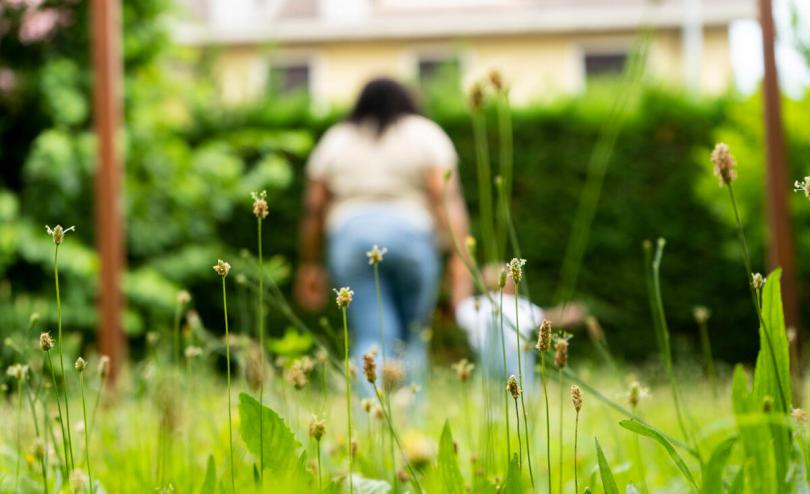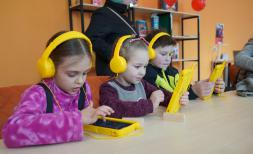COVID-19 crisis has pushed child traffickers online and out of sight – SAVE THE CHILDREN

The COVID-19 pandemic has pushed child traffickers indoors and online in Europe, Save the Children said today, making it harder to track down the criminal gangs forcing their victims into prostitution, to smuggle drugs or into forced labour.
Save the Children’s 11th edition of the report Little Invisible Slaves, focusing on child victims of trafficking, found the COVID-19 crisis had made victims less visible and traceable as criminal networks shifted their work off the streets.
Children and teenagers were particularly at risk of becoming victims of e-trafficking due to a combination of poverty, the closing of schools, and an increase of time spent online.
The report found that Western and Southern Europe had the highest number of confirmed cases of child trafficking globally, with 4,168 child victims [1].
In Italy, about 5% of 2,040 trafficking cases that were registered in 2020 involved a child, while about 80% of all cases involved women and girls. Most of the reports of child victims involved sexual exploitation in relation to teenagers from Tunisia (27.5%), followed by Ivory Coast, Guinea and Egypt.
Particularly worrying was the rise in trafficked women with children returned to Italy from other EU countries under the Dublin Regulation which gives powers to transfer refugees and migrants back to the EU nation in which they arrived, Save the Children said. The number of cases involving families rose to 12% last year from 6% in 2016 with most of the women from Nigeria.
Girls and boys, sometimes born out of abuse, witness violence against their often young mothers and could be at risk of violence themselves, or used in blackmail to keep their mothers under control. Some 190 women with 226 children are currently supported in the Italian protection system.
"These are often children of single girls who have been deceived, sold, kidnapped, and who have suffered torture and rape on their way to Europe. The children are often prisoners as well, along with their mothers. They are trapped in a cycle of violence, blackmail and abuse that must be broken at all costs. It is vital to strengthen and support services to help these women escape and to guarantee health, education, protection and inclusion for their children", said Raffaela Milano, Save the Children's Europe Programme Director in Italy.
Globally more than one in three victims confirmed of trafficking (34%) is child, mostly girls [2] – a percentage that has more than tripled over the past 15 years. In some low-income regions, around half of victims are children. Girls are mainly trafficked for sexual exploitation (72%) while boys are mostly trafficked to work (66%).
Save the Children’s report Little Invisible Slaves – Out of the shadows: the suspended lives of the children born of victims of exploitation, released on the eve of the World Day Against Trafficking in Persons, analysed the situation of girls, boys, young victims or potential victims of trafficking and exploitation in Italy, in Europe and globally.
Save the Children said the numbers are most likely just the tip of the iceberg as they only show registered cases and the trafficking market may be changing but shows no sign of diminishing.
Even before the COVID-19 pandemic, there were 50,000 confirmed human trafficking victims in 2018 across the world [3], a number that is likely to have risen on the back of the COVID crisis that has pushed an additional 142 million children and adolescents into poverty in 2020 [4].
At the peak of the pandemic, some 1.6 billion children were out of school, increasing the risk of them falling victim to trafficking or sexual exploitation, forced marriages or early pregnancies [4].
According to Europol[5], technology has expanded the capacity of criminal networks, both in the countries of origin and in those of transit and destination. Through technology, they can use encrypted communications, avoid direct interaction with recruited victims, avoid coming across police, and have access to of GPS-based apps.
Save the Children said there was an insufficient commitment from governments to monitor, prevent and fight child trafficking.
"The pandemic has hindered the direct contact of anti-trafficking organisations with victims or potential victims, which, in addition to the general economic vulnerability, has increased the risk of trafficking for a large number of young victims", explained Ms Milano. "The limitations caused by the pandemic have been transformed into opportunities by traffickers, who are using technologies and resources of the online network to consolidate their terrible system of human trafficking.
Save the Children runs several programmes for and with victims of trafficking in Italy. The organisation said it is vital to strengthen the collaboration between all involved, from police forces to online service providers and NGOs, and to respond adequately to the growth in online exploitation.
________________________________________
[1] Followed by South Asia (3,447), Sub-Saharan Africa (2,833), North America (2,370), East Asia and the Pacific (1,845), Central and Southeast Europe (459) and other regions.
[2] Of the 50,000 victims in court cases between 2016-2018 including 16,217 were minors (9,127 girls, 7,090 boys). UNODC, Global Report 2020 on Trafficking in Persons: https://www.unodc.org/unodc/data-and-analysis/glotip.html
[3]UNODC, Global Report 2020 on Trafficking in Persons: https://www.unodc.org/unodc/data-and-analysis/glotip.html
[4]According to estimates in Save the Children’s The Global Girlhood Report 2020, due to the economic impact of COVID-19, some 500,000 more girls in the world could be forced into marriage. In addition, it could lead to one million more early pregnancies, the main cause of death for girls between 15 and 19 years old, and 2 million more cases of female genital mutilation in the next 10 years, especially among girls under 14. See: https://www.savethechildren.it/cosa-facciamo/pubblicazioni/global-girlhood-report-2020
[5] EUROPOL Operations Directorate, The challenges of countering human trafficking in the digital era Report 2020.
Content available of Rosemary* and Jennifer*
For more information, feel free to reach out:
- Michele Prosperi, Michele.Prosperi@savethechildren.org
- Rik Goverde, rik.goverde@savethechildren.org
- Out of hours (BST), media@savethechildren.org.uk / +44(0)7831 650409




